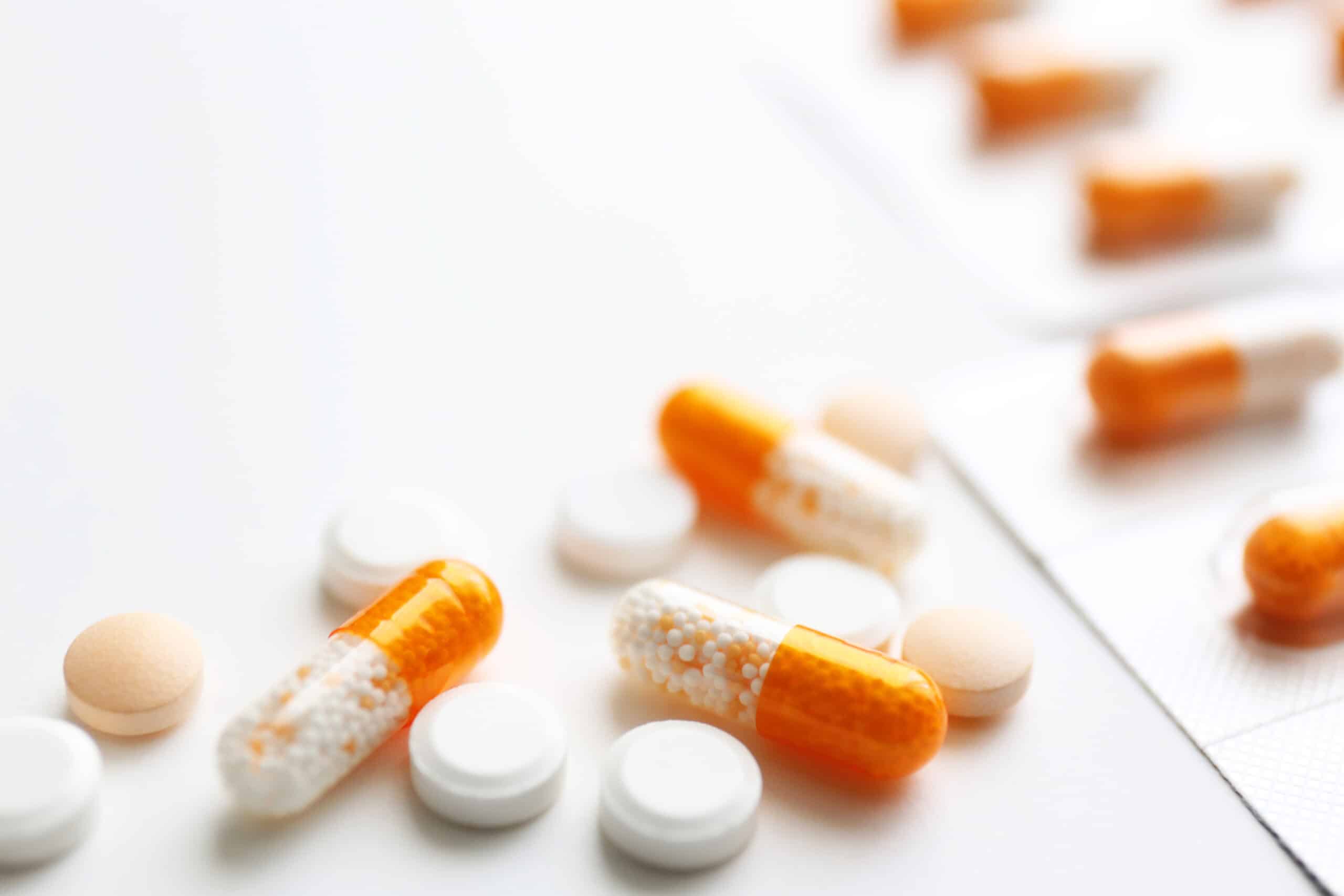
Formats & Packaging
Formats & Packaging
Your One-stop shop – Explore our Production & Packaging Solutions
From hard capsules,softgels and tablets to effervescents, powders andliquids we offer a wide variety of food supplement formats in diverse packaging solutions, including blisters, cans, tubes, bottles, sticks, sachets, doypacks, and vials. Additionally, based on our own IPs, we supply cosmetics with medical reference and substance-based Medical Devices as well as Pharmaceuticals in various formats, ensuring a comprehensive portfolio that extends beyond food supplements.
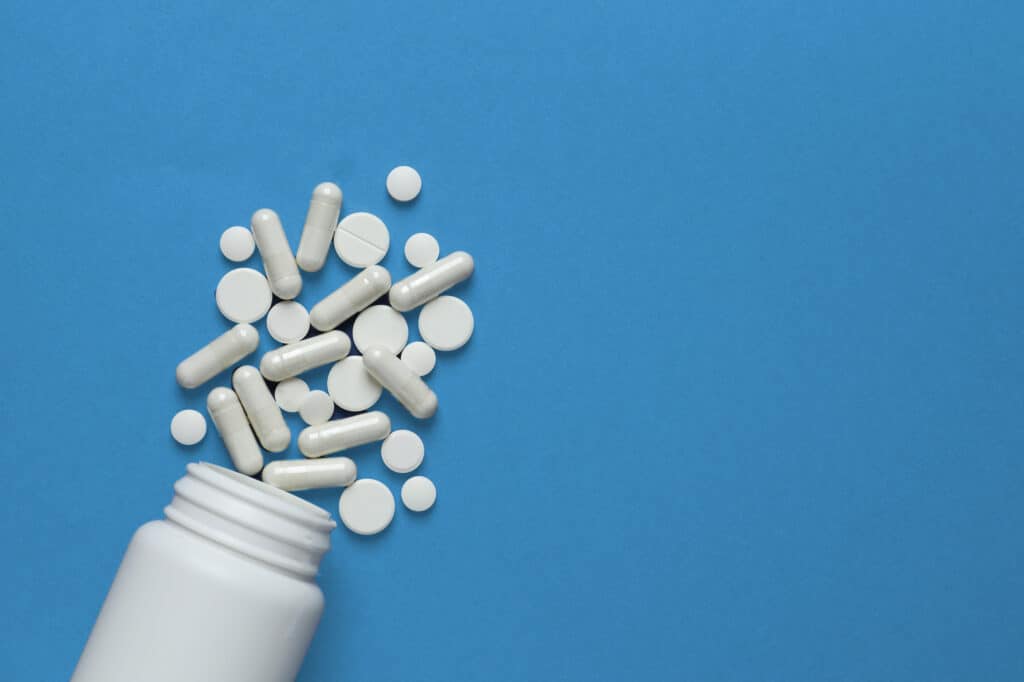
With over 45 years of experience, as well as extensive R&D and laboratory capacities, we can develop and manufacture food supplements in almost all dosage forms and different packaging formats in-house at our production facilities in Spain and Slovakia. Beyond our core segment food supplements, we also specialize in producing vaseline-based cosmetics, hydroalcoholic solutions, and biocidal repellents.
Furthermore, our partnerships with trusted manufacturers allow us to expand our range of self-produced food supplements to include special dosage forms like coated tablets and softgels (which are packaged on-site) as well as to produce our range of IPs in medical devices/pharmaceuticals and certain cosmetics. These partners have proven themselves over many years and are carefully qualified by us.
Our goal is to deliver all-in-one packaging and production solutions for a wide variety of product categories, all from one single source.
Formats & Packaging
Turn Your Concept into a Market-Ready Product
Let us transform your ideas into high-quality products that stand out on the shelves. Together, we will create solutions that elevate your brand.
Discover our production and packaging capabilities.
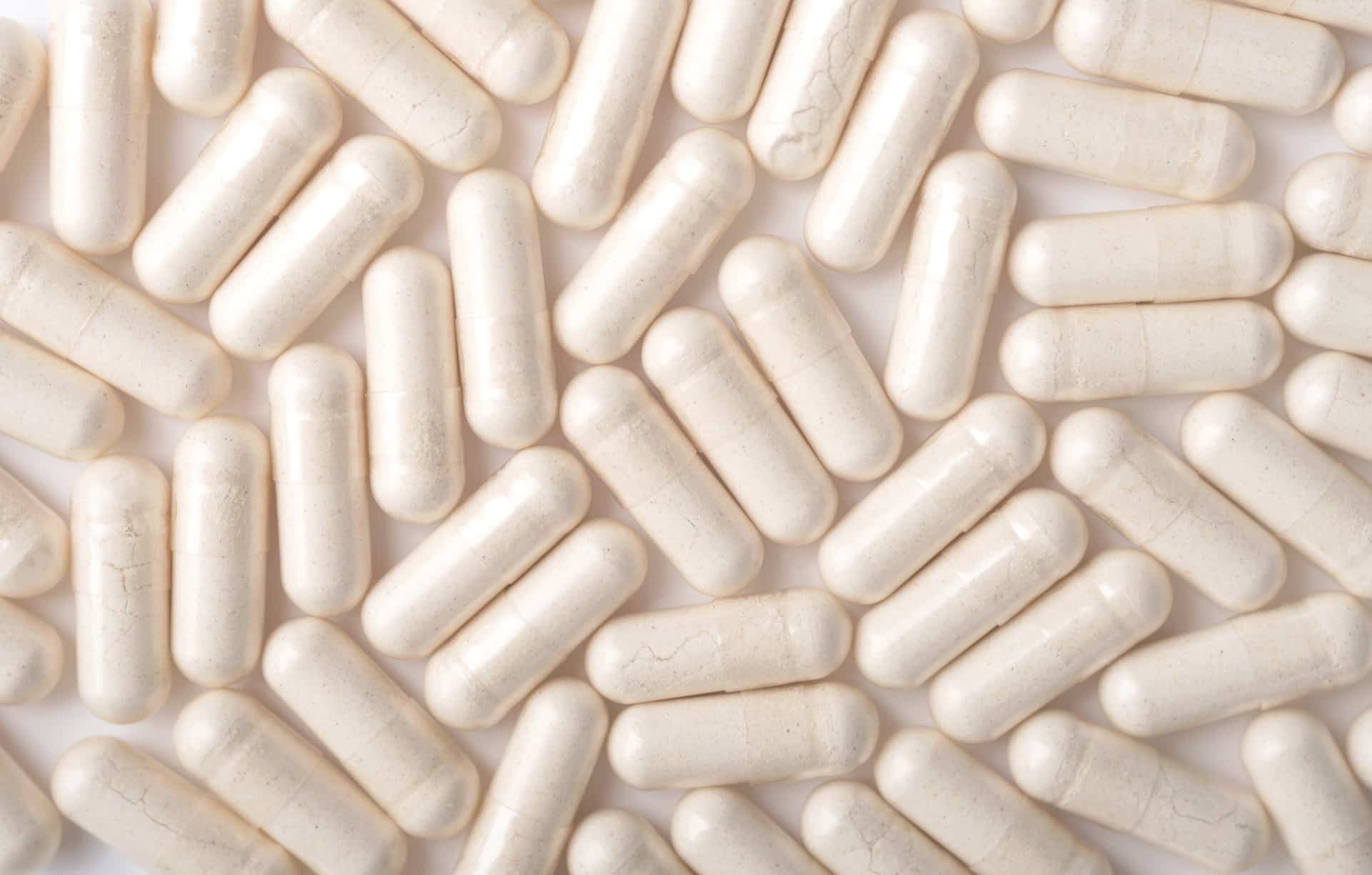
Hard Capsules
Classical format, offering accurate dosing, fast release and excellent ingredient protection thanks to Gelatin or HPMC shells.

Tablets
Widely used dosage form, available in uncoated and coated variants and with variations like break lines for individual dosing.
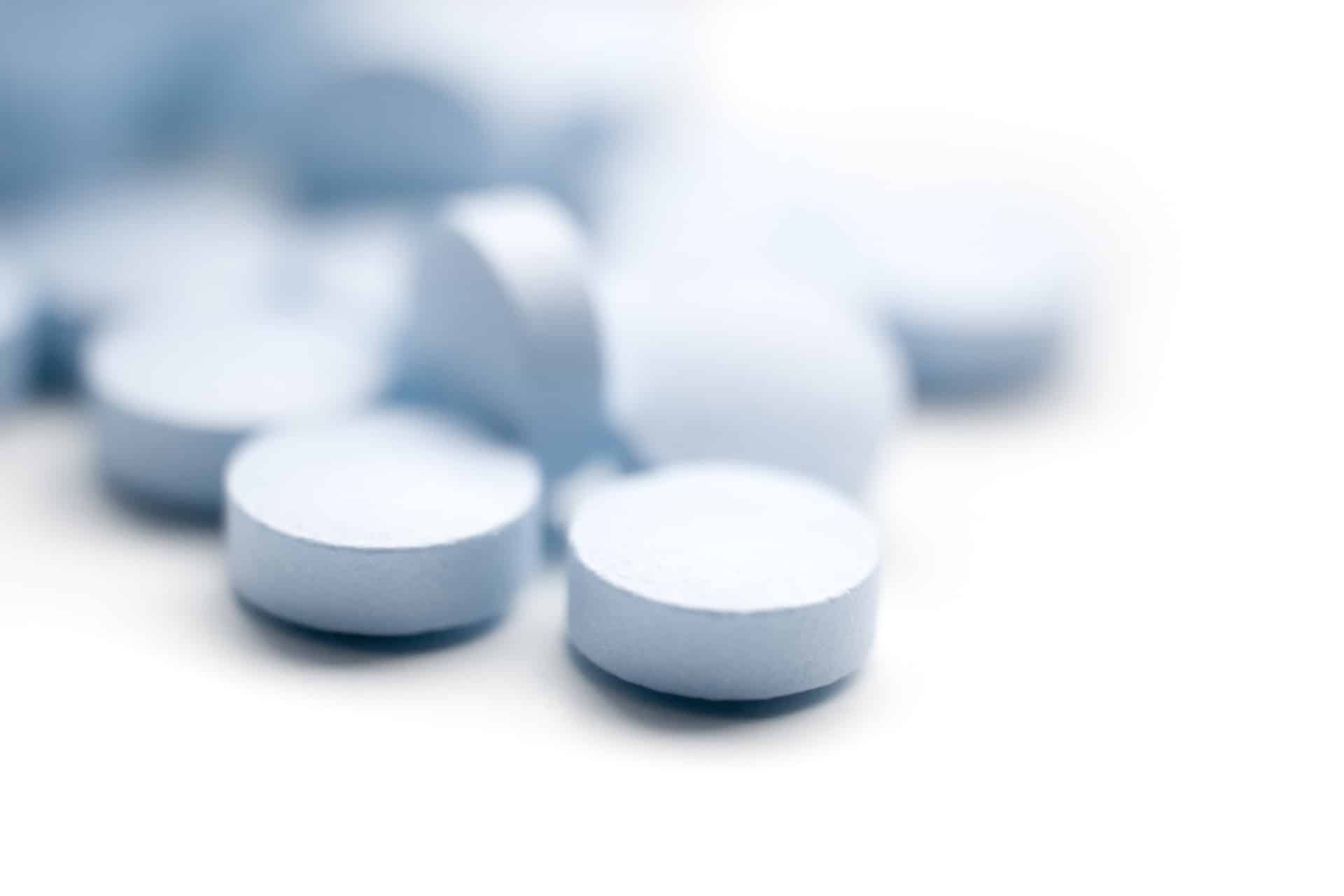
Chewables
Customizable with a wide range of delicious flavors, including sugar-free options, convenient and easy to take.

Effervescents
Popular format in delicious, fizzy flavors, designed to dissolve in water, facilitating fast and efficient absorption, including hydration benefits.
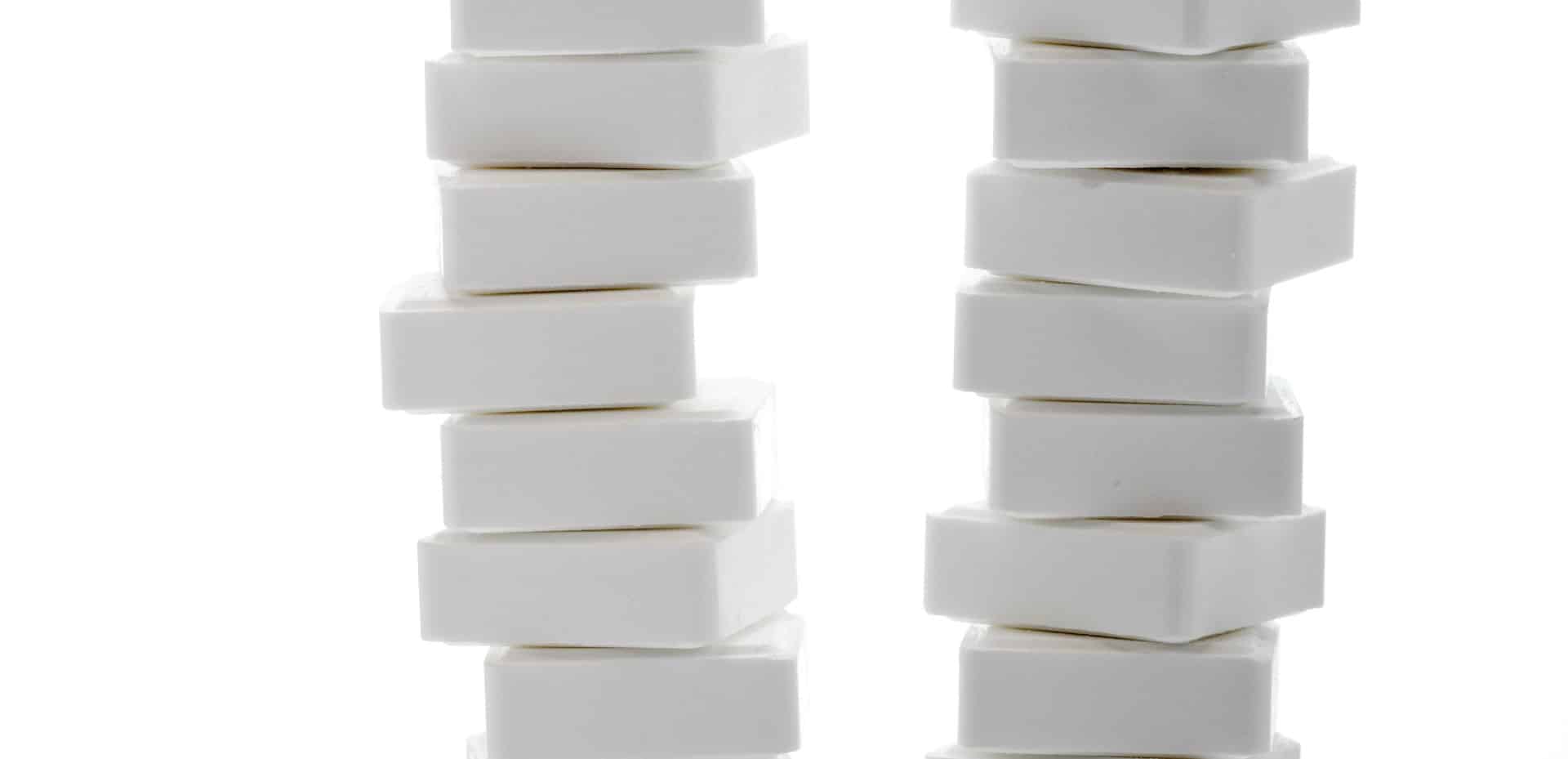
Dextrose
Effective format for a quick energy boost, easily absorbed and available in different flavors.
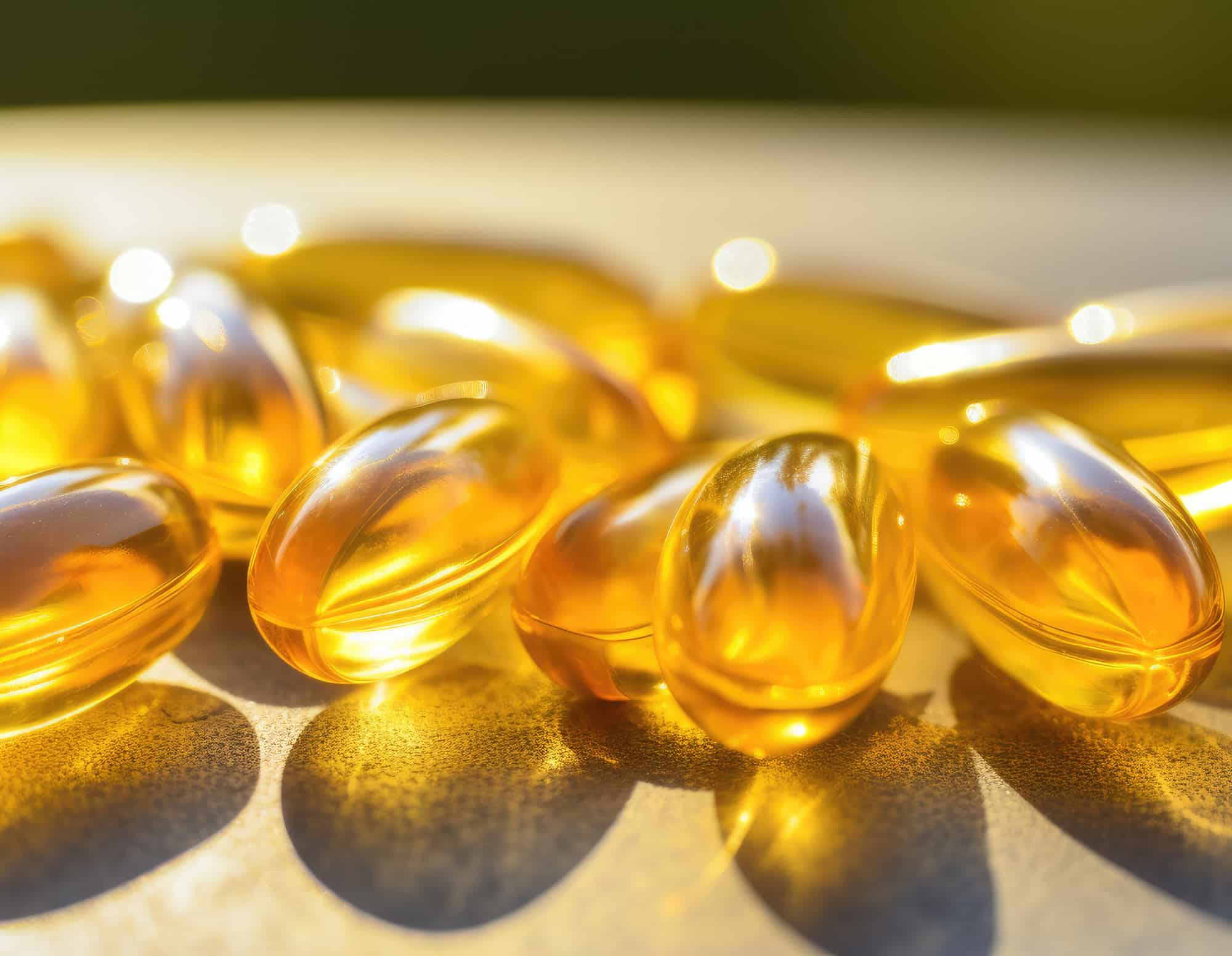
Softgels
Ideal for encapsulating oils or emulsions to protect sensitive nutrients and enable precise dosing.
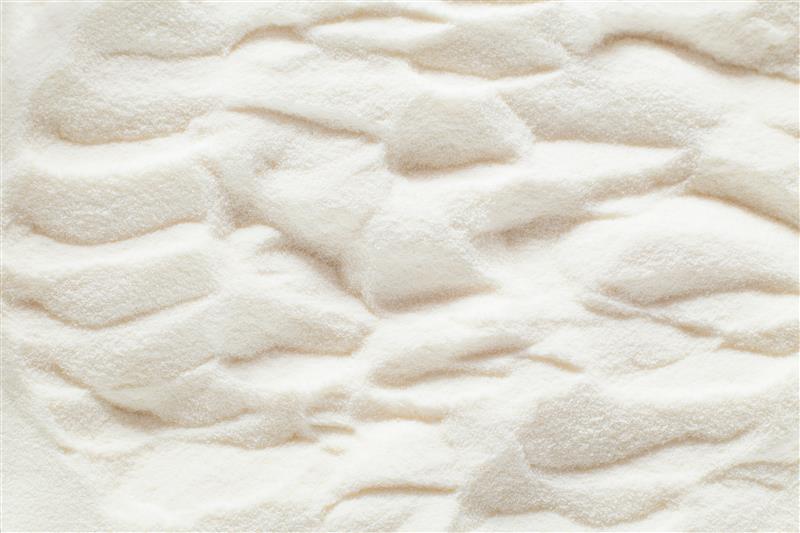
Powders
Versatile format with different flavors, for flexible use – direct or for dissolving, easy to consume and quickly absorbed.

Liquids
Emerging format with flavorful options, customizable dosing, ready to drink and quickly absorbed.
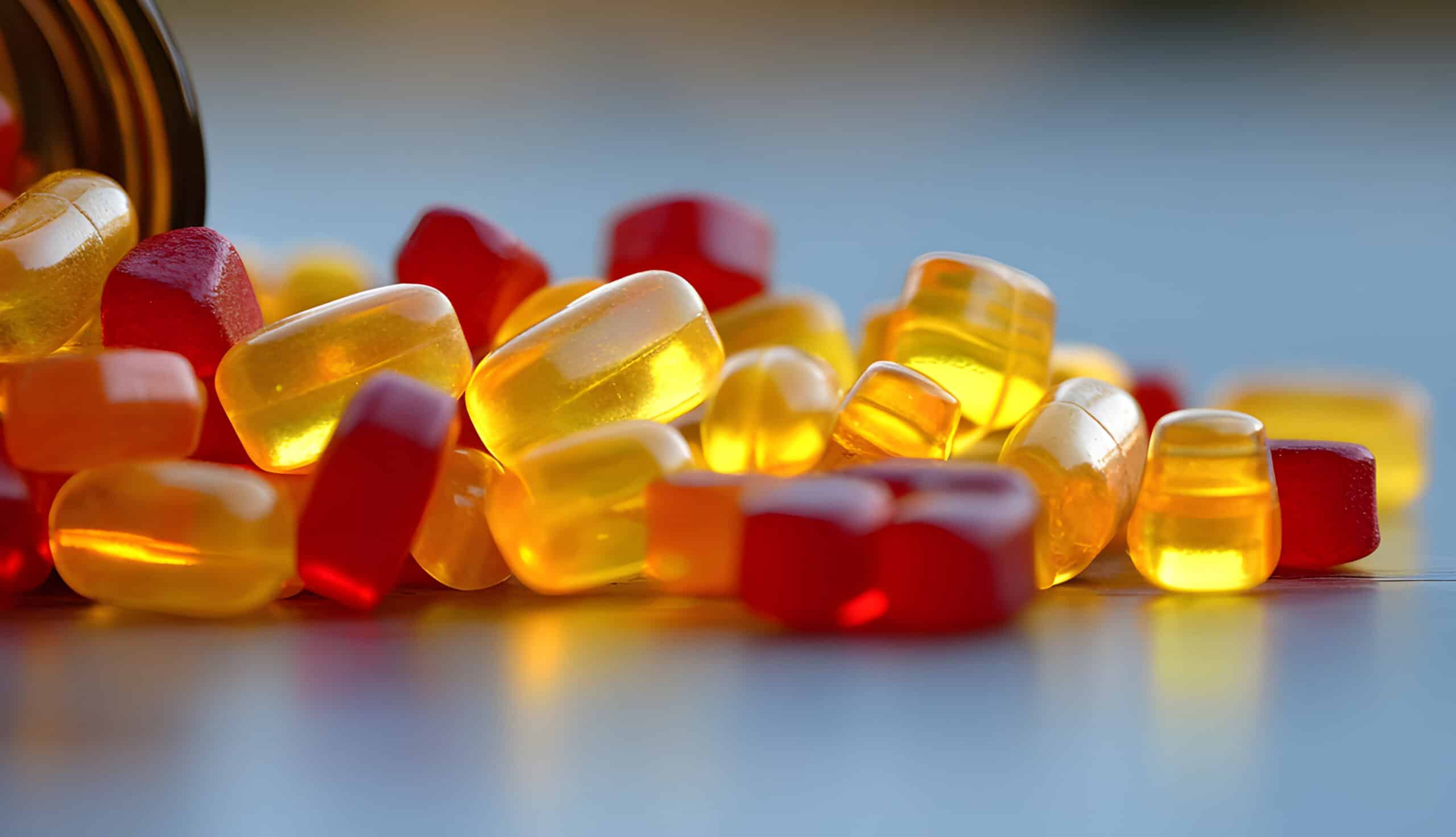
Gummies
Trendy format with customizable shapes and flavors, convenient and enjoyable for people with pill fatigue.
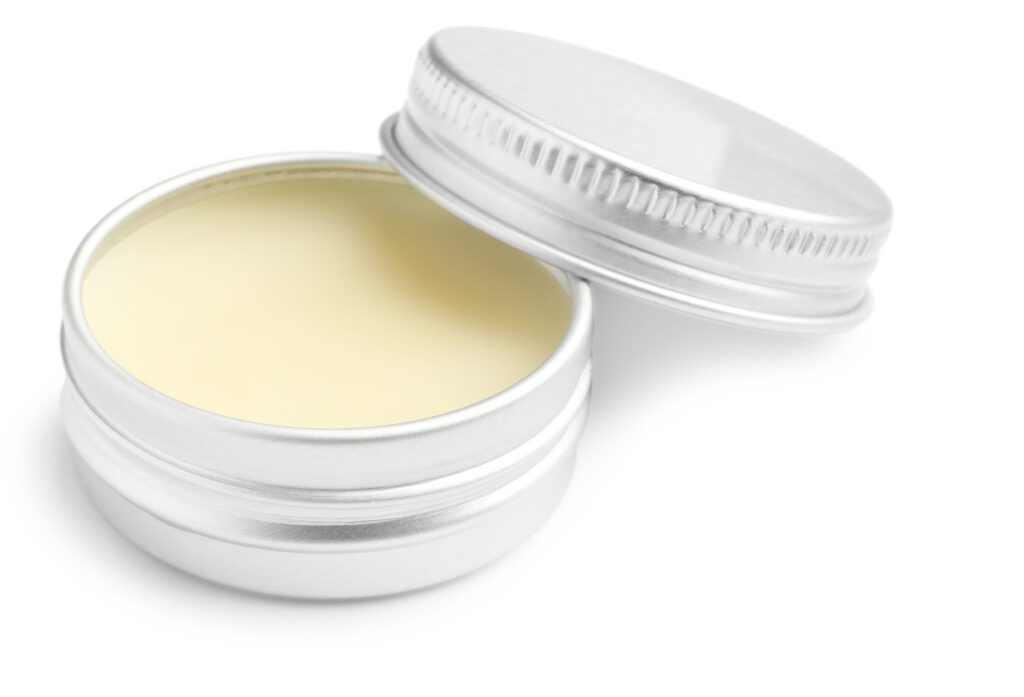
Semi Solids
Format for topical controlled application, available versatile textures such as ointments, creams, gels or Vaseline-based formulations.
Find the Best Dosage Form for your Food Supplement
The dosage form of a supplement plays a critical role in ensuring both its effectiveness and consumer compliance. A positive attitude toward a product can enhance regular use, improving nutrient absorption and increasing the bioavailability of active ingredients. Beyond convenience and sensory appeal, dosage forms also impact practical factors like technical feasibility, shelf life, providing protection against light and air to maintain product stability. Last but not least, the choice of dosage form also has an impact on the price level of the product and may also change the consumer’s perception of value.
From capsules and tablets to powders and more, each dosage form offers unique benefits tailored to diverse needs and preferences. In the following section, we’ll explore the advantages of various formats to help you understand their distinct qualities.
Discover the benefits of each format
Hard Capsules
Hard capsules are among the most popular and widely used dosage forms for food supplements. They are made of two prefabricated halves that are tightly sealed to prevent leakage at the seam. The solid shell of hard capsules can be composed of various materials, such as gelatin or HPMC (hydroxypropyl methylcellulose), a vegan-friendly alternative.
Capsules effectively protect their contents from external influences like light and oxidation. With minimal or no pressure during filling and reduced thermal stress, they ensure the preservation of sensitive nutrients. Capsules dissolve in the stomach, ensuring precise ingredient release, making them an excellent option for bitter-tasting or sticky herbal formulations. Additionally, capsules are less irritating to mucous membranes, are easy to swallow, and offer simple and accurate dosing. Being odorless and tasteless adds to the many advantages. Capsules are also ideal for “clean” formulations, free from additives, aligning with the growing trend of clean and natural labeling.
Softgels
Softgel capsules are ideal for encapsulating oils, emulsions, or pasty consistencies. The capsules are formed directly during the filling process from two tightly sealed halves made from gelatin or vegetarian materials like carrageenan. If needed, opaque, non-transparent shells can provide protection from light, ensuring ingredient stability.
A key advantage of softgel capsules is the minimal or no pressure during filling, which preserves sensitive nutrients by reducing thermal stress. Additionally, the shell shields against environmental factors and masks unpleasant tastes, making them especially popular for products like fish oil. The encapsulation ensures the contents are easily absorbed without direct contact with the oral mucosa.
Tablets
Tablets are available in both uncoated and coated variants and alongside capsules, they are the most widely used dosage form. We produce uncoated tablets in our facilities, while coated tablets are manufactured by our trusted, long-standing manufacturing partners. Developing a technically optimized tablet formulation requires a sophisticated and detailed process. Unlike capsules, tablets offer variations such as break lines, enabling precise, individual dosing. Upon ingestion, an uncoated tablet breaks up rapidly into smaller particles until it finally dissolves completely in the stomach, thereby releasing the active ingredient. Therefore, uncoated tablets are a suitable solution for applications that require immediate action. To ensure optimal dissolution, tablets should always be taken with sufficient liquid. Uncoated tablets are usually the more economic option since they don’t have an additional coating process.
Coated tablets provide an additional layer of protection, shielding them from external factors such as moisture, light, and air. This helps extend their shelf life and maintain the potency of the active ingredients as well as easing swallowing and improving taste and appearance.
Effervescents
The popular format of effervescent tablets is designed to dissolve in water and therefore allow the active ingredients to enter the body in a pre-dissolved form, facilitating faster and more efficient absorption in the gastrointestinal tract. With their variety of delicious fizzy flavors, they make supplementation a pleasant and enjoyable experience. Effervescents also promote hydration by encouraging you to drink a full glass of water with each dose and eliminate the need for precise measuring. They are especially preferred by consumers with swallowing difficulties, as well as by children. However, due to their sensitivity to moisture and fragility, effervescent tablets require proper handling and storage to ensure their quality and effectiveness. Similar to tablets, effervescent tablets are typically an economical dosage form to produce.
Chewables
Chewable tablets are an excellent choice for food supplement formulations when production time and cost efficiency are key factors. They can be customized with a wide range of delicious and innovative flavors, effectively masking unpleasant tastes and making them more enjoyable to take. Chewable tables are particularly convenient for consumers with swallowing difficulties and children, as they are easy to take without liquids and easy to dose. Additionally, sugar-free options are available to cater to specific dietary needs.
Dextrose
Dextrose, a simple sugar derived from corn or wheat, is an effective format for food supplements, particularly for those seeking a rapid energy boost. Easily absorbed by the body, dextrose provides an immediate source of glucose, making it ideal for athletes or anyone needing quick recovery after physical exertion. They are available in various formulations, including pure dextrose or combinations with single or multiple active ingredients or combined with vitamins, minerals or amino acids, allowing for tailored nutritional benefits. To enhance their appeal, dextrose tablets come in an extensive range of flavors, offering consumers both variety and enjoyment.
Powders
Powders are an excellent format for certain food supplements, collagen, amino acids or electrolytes. One key advantage is that powders do not require costly or time-consuming pre-treatment during production.
Food supplements in powder form are particularly suitable for people who have difficulty swallowing capsules or tablets, as they are easy to consume and are absorbed quickly by the body. They can be effortlessly integrated into daily routines and – depending on the formulation – they can adapted to personal preferences: consumed directly, dissolved in water, juice, or milk, stirred into yogurt, or mixed with other foods. Powders also allow for precise and easy dosing, offering consumers flexibility in how they use them. Available in a wide range of delicious flavors, powders cater to the individuality of modern, fast-paced lifestyles.
Liquids
Liquid food supplements remain a popular format choice as they are ready to drink immediately. They are an uncomplicated and flavorful option for people who don’t like to swallow tablets and capsules. Unlike solid dosage forms, which need to be broken down by the digestive system before releasing nutrients, liquids start getting absorbed almost immediately upon ingestion. This can result in higher bioavailability, meaning a greater proportion of the nutrients enters the bloodstream and is utilized by the body. Furthermore, depending on the type of packaging, liquid products can convey a particularly high value to the consumer
Gummies
Gummies are one of the fastest-growing trends in delivering essential nutrients. What was once primarily targeted toward children has now expanded into the adult supplement market, as consumers increasingly look for health solutions that are not only effective but also convenient and enjoyable to consume. Unlike traditional capsules or tablets, gummies are flavored and have a candy-like, chewy texture, making them an enjoyable option for adults and children. They are especially convenient for people who struggle with pill fatigue or dislike the taste of liquid supplements. Gummies can be formulated with a wide range of active ingredients, from vitamins and minerals to herbal extracts. Additionally, their customizable shapes and flavors make them ideal for creating unique and engaging products. However, it is crucial to remain aware of the risk of overconsumption.
Our Dosage Form Options for your Cosmetic Solutions
While the dosage forms discussed previously focused on food supplements taken orally, semi-solid formulations are primarily designed for topical application in cosmetic and medical contexts. These formulations are used to deliver active ingredients to localized areas of the body, providing targeted benefits.
Semi-solids are commonly used as treatment applied to the skin, nasal mucosa, cornea, buccal tissue, ear, or urethral membrane. They can be produced in various forms including ointments, creams, lotions and gels, typically consisting of two phases: oil and water. One phase serves as the continuous (external) medium while the other phase is dispersed (internal), with active ingredients dissolved in one or both phases.
Cosmetics can of course also be formulated as a liquid – for use as a tincture or spray, for example.
Semi Solids – Cream, ointment, lotions, gel or vaseline-based formulation – what is the difference?
The main difference between ointments, creams, lotions and gels lies in their composition, consistency, and how they interact with the skin. All of these products are emulsions, which are mixtures of water, oil and an emulsifier (fats and oils that soften skin), making it possible to mix the two substances. The result is an emulsion which is categorized based on the proportion of water to oil, forming either a water-in-oil (W/O) or oil-in-water (O/W) mixture.
- Water-in-oil emulsions provide intense moisturizing and long-lasting hydration.
- Oil-in-water emulsions absorb easily into the skin, delivering immediate hydration.
In addition, cosmetics can be based on Vaseline, without any water component.
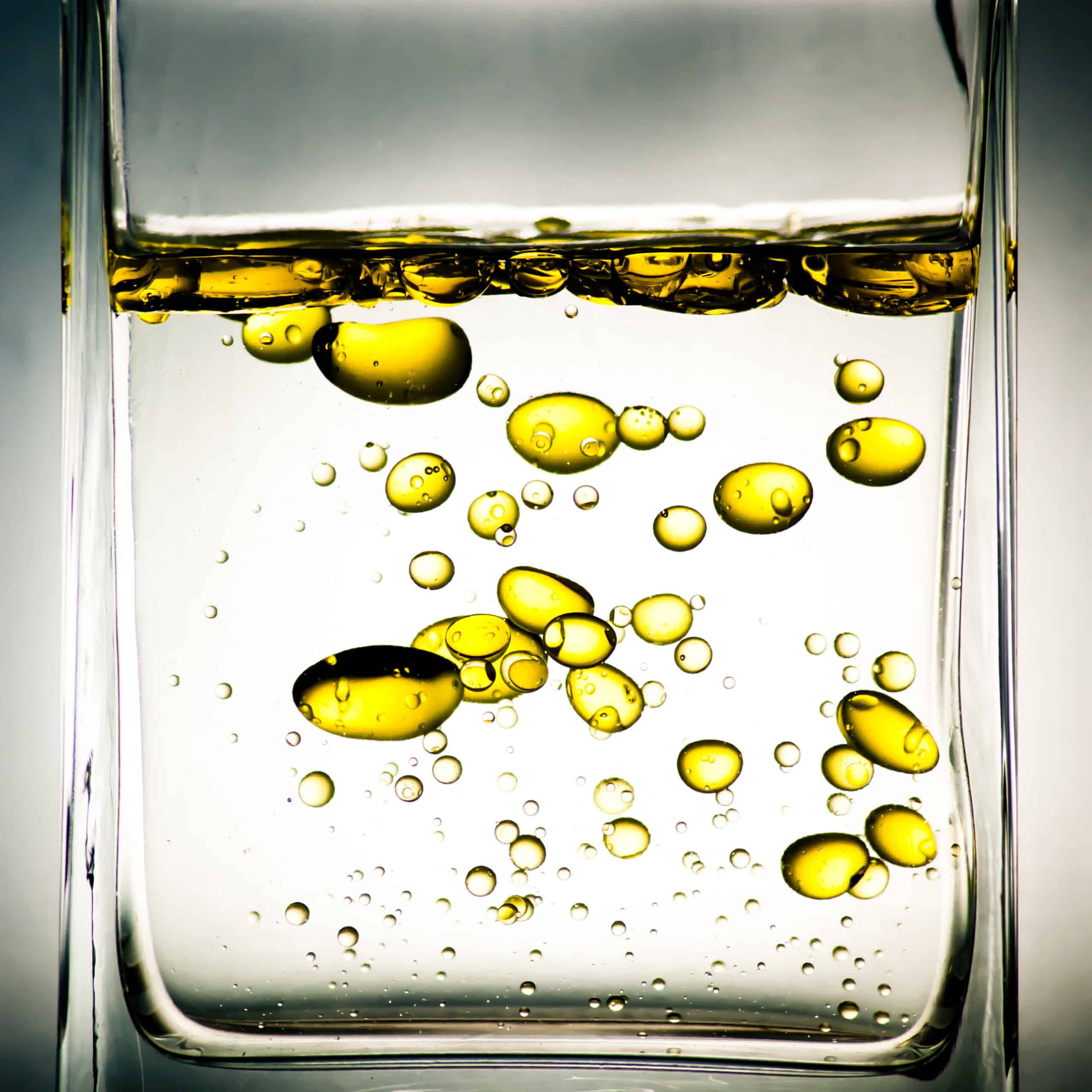
Ointments – Extra rich for maximum protection
Ointments are water-in-oil emulsions, making them richer and more occlusive than other formulations. They create a protective barrier that retains moisture, helping to heal very dry, chapped, or cracked skin while keeping minor wounds hydrated for optimal recovery.
Creams/Lotions – The moisture boosters
Creams are oil-in-water emulsion with a higher water content than oil, allowing for deep hydration and easy application. Their oil-to-water ratio varies, providing refreshing, balancing, or intensely moisturizing effects. Formulated with targeted ingredients, creams cater to different skin types and needs.
Gels – Fast absorption and lightweight feel
Gels are transparent formulations that are actually closer to liquids than solids, because they are primarily water-based. They absorb quickly into the skin without leaving a greasy residue, making them ideal for both skincare products as well as for medicinal applications.
Vaseline-based formulations – Ultimate occlusive moisturizer and skin protection
Vaseline is a petroleum jelly-based formulation known for its powerful occlusive properties. It creates a protective barrier on the skin, sealing in moisture and preventing water loss. Widely used for wound healing, dry skin, and irritation relief, Vaseline is a versatile and gentle solution for skin protection and hydration.
An overview
Composition
Vaseline
Primarily petroleum jelly (Vaseline), often combined with other ingredients.
Ointment
W/O, high oil content (around 80%) with minimal water.
Cream
O/W, balanced mix of oil and water (typically 50/50).
Lotion
O/W, high water content with a small amount of oil.
Gel
Water-based with thickening agents to create a semi-solid texture
Consistency
Vaseline
Very thick, greasy, and highly occlusive.
Ointment
Thick, greasy, and occlusive.
Cream
Thicker than lotions but less greasy than ointments.
Lotion
Light, fluid, and non-greasy.
Gel
Clear, jelly-like, and non-greasy.
Absorption
Vaseline
Creates a strong moisture barrier, preventing water loss but allowing minimal absorption of active ingredients.
Ointment
Forms a protective barrier on the skin, allowing slow absorption of active ingredients.
Cream
Hydrates the skin while allowing some occlusion; absorbs faster than ointments.
Lotion
Quickly absorbed, leaving minimal residue.
Gel
Dries quickly, leaving a cooling effect without residue.
Best for
Vaseline
Extreme dryness, cracked skin, wound protection, and barrier repair (e.g., chapped lips, burns, diaper rash).
Ointment
Dry or damaged skin, chronic conditions (e.g., eczema, psoriasis), and deep penetration of medication.
Cream
Normal to dry skin, treating mild to moderate skin conditions, and daily moisturization.
Lotion
Large areas, oily skin, and mild hydration.
Gel
Oily skin, fast absorption of active ingredients (e.g., pain relievers, acne treatments), and scalp or hairy areas.